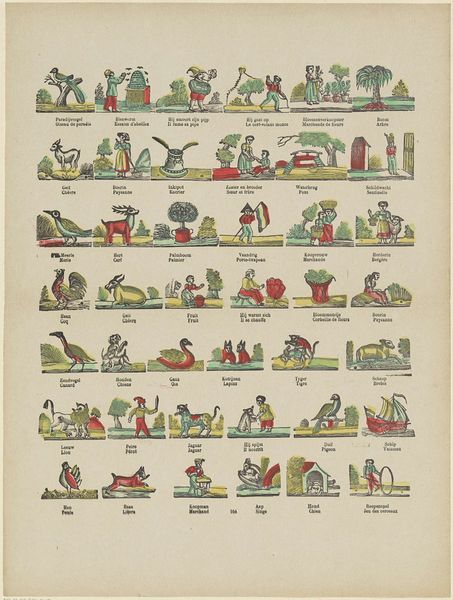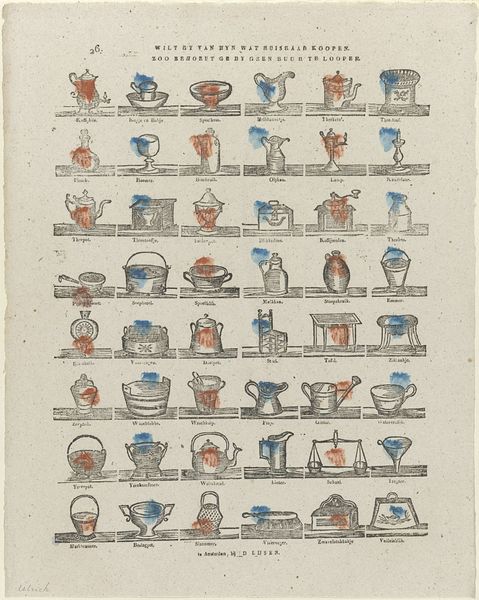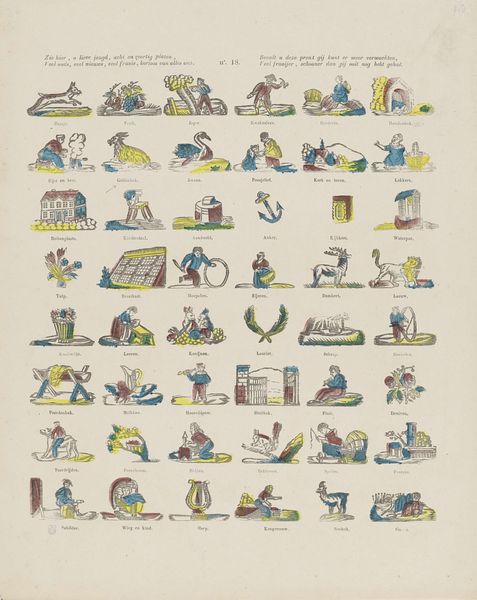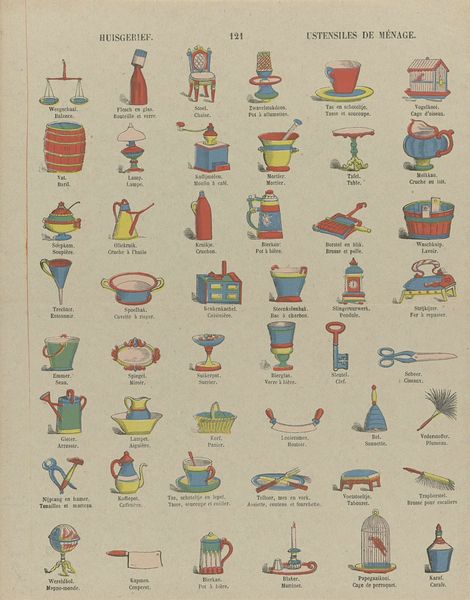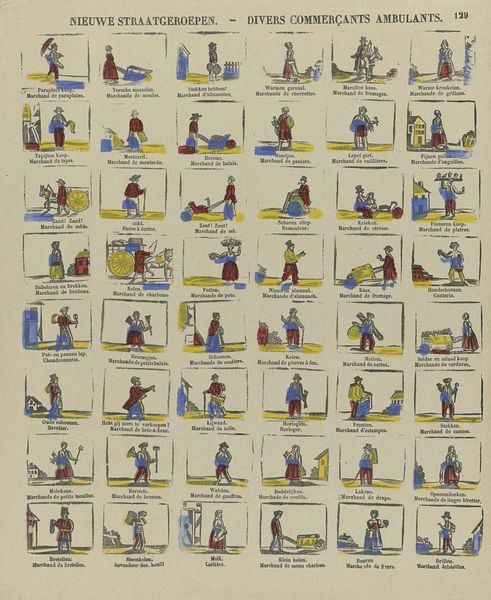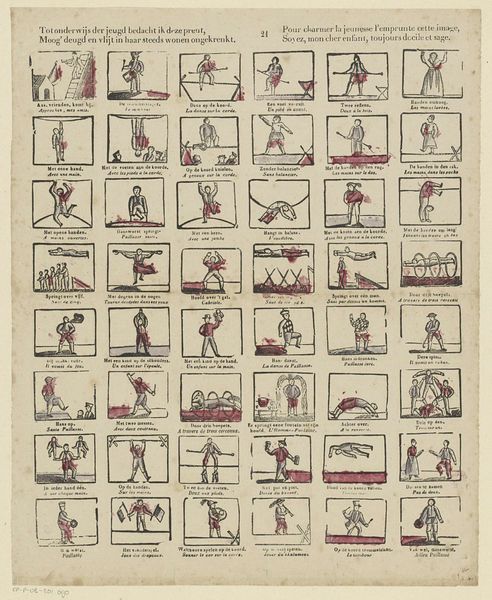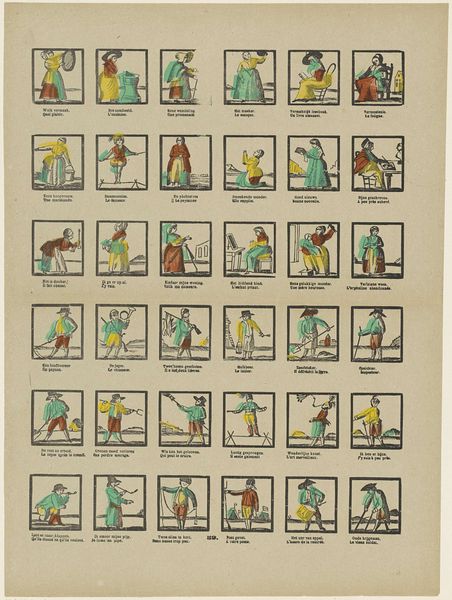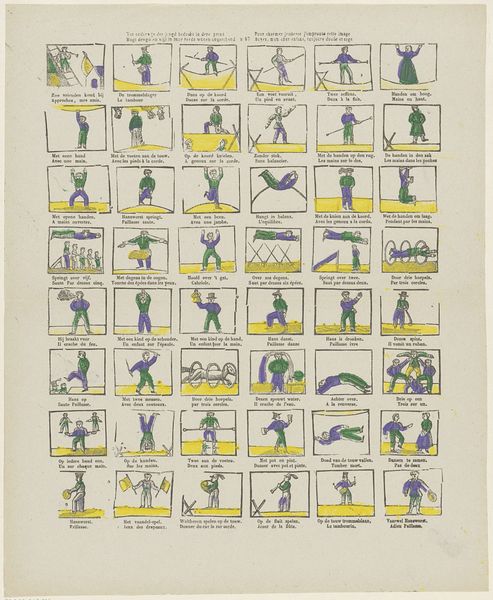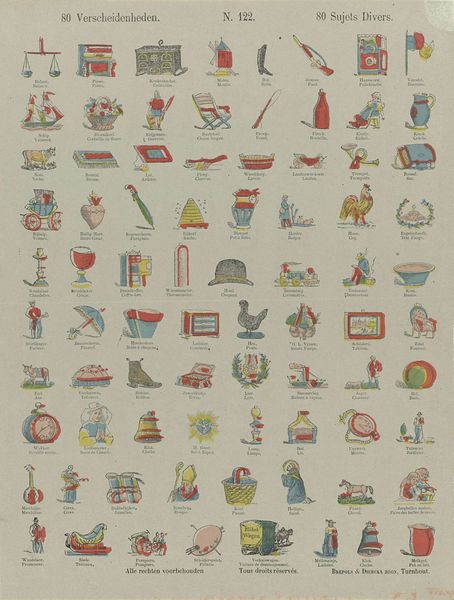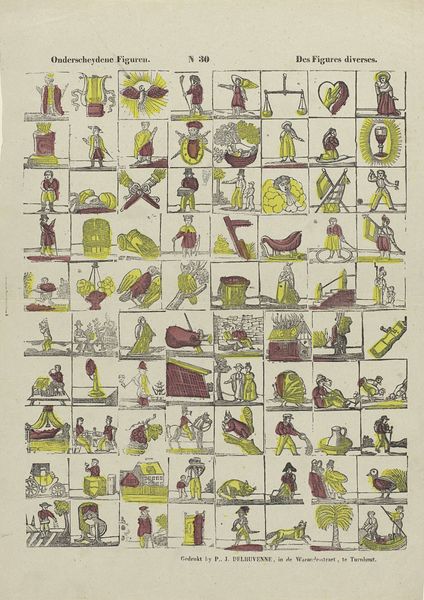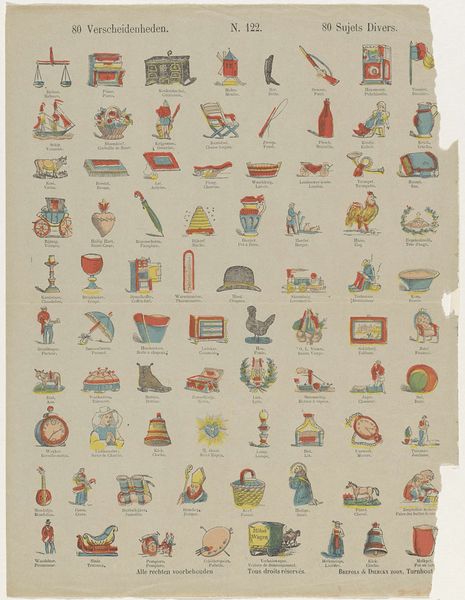
Wilt gij van mij wat huisraad koopen? / Zoo hoeft ge bij geen buur te loopen! / Achetez des objets de ménage, / Vous n'aurez plus besoin du voisinage 1800 - 1833
0:00
0:00
philippusjacobusbrepols
Rijksmuseum
print, etching, paper, engraving
#
aged paper
# print
#
etching
#
paper
#
watercolour illustration
#
genre-painting
#
decorative-art
#
engraving
Dimensions: height 426 mm, width 335 mm
Copyright: Rijks Museum: Open Domain
Curator: Let’s take a look at this intriguing print, "Wilt gij van mij wat huisraad koopen? / Zoo hoeft ge bij geen buur te loopen! / Achetez des objets de ménage, / Vous n'aurez plus besoin du voisinage," by Philippus Jacobus Brepols, created sometime between 1800 and 1833. It's an etching with engraving, delicately colored, and presented on paper. Editor: It reminds me of a slightly faded, whimsical catalogue. The repetition of these everyday objects, each perched on its little shelf, gives it a quaint, almost dollhouse-like charm. What was its purpose, do you think? Curator: Contextually, these prints served a didactic purpose, common in the 19th century. They often doubled as language-learning tools, as we see with the Dutch and French phrases, and potentially aided literacy, disseminating practical knowledge amongst a broader population. It's class consciousness interwoven with commodity culture. Editor: The little splashes of blue and red watercolor feel almost rebellious against the rigid grid layout. I imagine some artist carefully dabbing each teapot, each little bucket… adding a bit of soul. What does the selection of these particular objects say? Curator: The chosen items represent domestic tools—things used in everyday housekeeping and food preparation, revealing a focus on the roles and expectations of women in the household. Also, the use of both Dutch and French speaks volumes of Belgium’s complex identity formation within wider European politics of that time. Editor: It’s strange, but it stirs this odd sense of nostalgia for a life I never even knew! Like a longing for simplicity. Curator: Exactly. While seemingly quaint, works such as this offer us insights into the nuances of domestic economies, gendered divisions of labour, and social mobility during periods of profound societal shifts. The commercial meets the political. Editor: And personally? I see an entire imagined community constructed through these simple objects, rendered in such a loving way! A tender and clever historical artifact, ripe with implications.
Comments
No comments
Be the first to comment and join the conversation on the ultimate creative platform.
